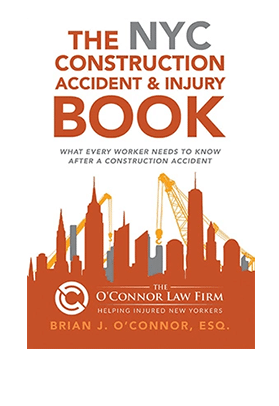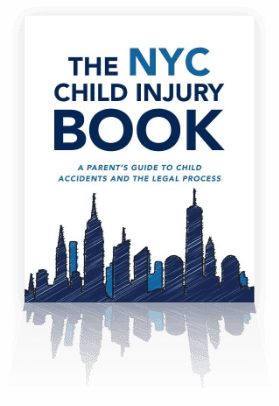New York City Amputation Attorney
Helping Victims of Limb Loss
Amputations are among the most severe injuries that a person can survive. If you’ve endured an amputation, we don’t need to tell you that this type of injury changes every part of your life and creates enormous expenses along the way. What we can tell you, however, is that you’re not alone.
About 1.8 million Americans are currently living with an amputation, with leg amputations above or below the knee being the most common type of amputation taking place. Around 185,000 amputation surgeries are performed in the U.S. each year.
Many of these amputations are the result of accidents that were caused by the reckless and careless actions of someone else. Many require the victim to take legal action to obtain the compensation they need to face the enormous financial and psychological consequences of the injury.
If this is the situation you find yourself in, a compassionate and experienced amputation lawyer from The O’Connor Law Firm can help you understand this legal process of obtaining compensation for your injury. Contact us today for a free case review at 212-566-5868 or 718-948-3500.
What Is an Amputation?
An amputation is an acquired condition that involves the loss of a limb. The limb could be severed through a traumatic amputation, such as in the course of a motor vehicle accident, or the amputation could take place in the operating room after a limb has sustained such severe damage through injury or disease that has resulted in inadequate blood flow to the limb. Without adequate blood flow, the tissues of the limb will begin to die and the individual will be at an increased risk of a potentially fatal infection.
The Causes of Amputations
Amputations are generally required due to poor blood circulation in the limb caused by severe damage to the arteries. Some of the causes of this type of damage include:
- Motor vehicle accidents, particularly accidents involving ejection from the vehicle and motorcycle accidents due to a lack of protective features such as a steel frame to shield the body from damage.
- Severe burns. Third and fourth-degree burns not only damage all of the layers of skin but also can damage the structures beneath the skin, including arteries that provide blood and oxygen.
Crush-type injuries resulting from accidents involving heavy machinery or other construction-related accidents.
The Financial Impacts of an Amputation
According to recent data from Johns Hopkins Center for Injury Research & Policy, the lifetime costs for an amputation will exceed $500,000 over the course of a person’s life. Those costs include:
- Initial hospitalization
- The cost of the procedure, including anesthesiology and surgical services.
- The cost of any re-hospitalizations for acute care of the wound.
- Both inpatient and outpatient rehabilitation.
- Occupational therapy and physical therapy.
- Prescription medication for pain and to prevent infection.
- The purchase and maintenance of prosthetic devices.
In addition to the high medical costs of the injury, the individual faces other costs associated with the amputation, including lost wages during hospitalization and subsequent at-home recovery and the potential that the individual will have to change careers due to disabilities created by the amputation. Home and vehicle modifications can also be required to accommodate the injury.
Rehabilitation After Limb Loss
One of the costliest aspects of amputation is rehabilitation. The wound from the amputation should heal within four to eight weeks with proper wound care. However, recovery from an amputation is a lifelong process that involves long-term rehabilitation that will assist the individual in regaining self-image, self-care, and mobility. The success of rehabilitation depends on several factors, including the level and type of amputation, the overall health of the patient, and how much family support he or she has during the process.
Various forms of rehabilitation received after the amputation can assist the patient in learning how to:
- Help wound healing and stump care.
- Improve motor skills to restore activities of daily living.
- Perform exercises that can promote muscle strength and control.
- Pain management for both postoperative pain as well as phantom pain. Phantom pain is a painful sensation that occurs below the level of amputation as a result of messages fired from the portion of the brain that was once connected to the nerves in the amputated portion of the limb.
- Emotional support during the grieving period over the loss of the limb.
- Use of prostheses and other assistive devices.
- Adapting the home environment to improve ease of use and accommodate the amputation.
- Vocational counseling aimed at assisting the individual in finding a new job or performing their old job-related tasks after amputation.
How a New York Amputation Lawyer Can Help You
An experienced catastrophic injury attorney is essential in the process of recovering compensation for your injury. This type of case is complex, requiring both knowledge of the legal process as well as knowledge of the common physical, financial, and emotional impacts that are associated with this type of injury. At The O’Connor Law Firm, we can help you understand the types of expenses and impacts you can seek compensation for, including:
- Medical expenses for past and future medical care
- Rehabilitation services
- Lost wages
- Loss of future earning capacity
- Physical pain and suffering
- Emotional distress
- Loss of the enjoyment of life
Let our experienced amputation lawyer explain the legal options that are available to you and explore ways to help you obtain the financial security your family needs at this time. Contact us by filling out our contact form or by calling 212-566-4868 for a free case evaluation.




